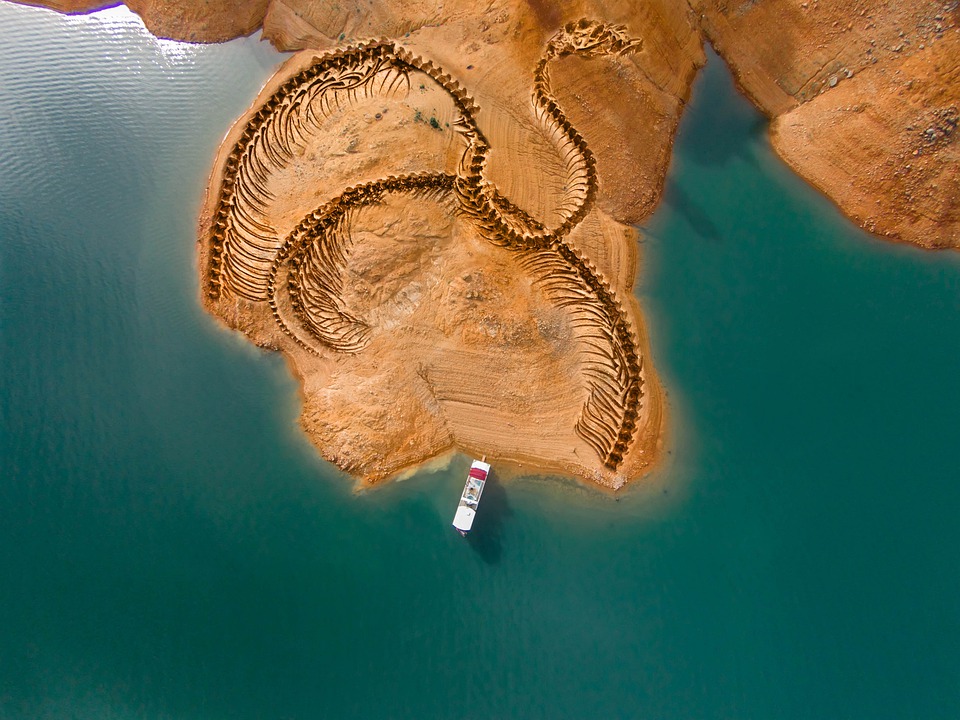There is still so much to learn about the dinosaurs that once roamed the Earth. A recent breakthrough was able to shed more light on the spinosaurus, also known as the first known aquatic dinosaur.
Express reports that researchers in Morocco were able to discover more details as to how this 50-foot long aquatic dinosaur lived. Their findings were published in the journal Nature, and National Geographic science writer Michael Greshko also wrote a piece. Greshko described the Spinosaurus aegyptiacus had an evolving tail that was much longer than that of the adult tyrannosaurus rex and that five tables were needed in order to put together the bones that made up the tail.
“It’s so large, five tables are required to support its full length, and to my shock, the appendage resembles a giant, bony paddle. Delicate struts nearly two feet long jut from many of the vertebrae that make up the tail, giving it the profile of an oar. By the end of the tail, the tall, bony, bumps that help adjacent vertebrae interlock practically disappear, letting the tail’s tip undulate back and forth in a way that would propel the animal through water,” wrote Greshko.
According to the lead researcher, National Geographic’s Nizar Ibrahim, the Spinosaurus aegyptiacus was practically building its own tail, which would explain the constant evolution. This dinosaur was confirmed as semi-aquatic by 2014, but at the time, this theory was rejected by other scientists. This discovery would then provide further evidence that the spinosaurus was not only capable of staying on the shore, but it was also capable of moving through the water completely.
Aside from more information about the spinosaurus, paleontologists also discovered another species of the pterosaur. It was previously reported that researchers were able to discover the fourth species of the pterosaur in Morocco in Northern Africa. This would be the first dinosaur discovery made on African soil, as pterosaur fossils are mostly found in Europe, Brazil, and China.
This new species belongs to a pterosaur group called tapejarids. This species existed during the Cretaceous period around 140 million years ago, and alongside other species of dinosaurs, went extinct during the mass extinction caused by an asteroid collision 66 million years ago.



 Lost in space: MethaneSat failed just as NZ was to take over mission control – here’s what we need to know now
Lost in space: MethaneSat failed just as NZ was to take over mission control – here’s what we need to know now  Trump Administration to Launch Autism Initiatives Targeting Acetaminophen Use and New Treatment Options
Trump Administration to Launch Autism Initiatives Targeting Acetaminophen Use and New Treatment Options  FDA Pilot Program Eases Rules for Nicotine Pouch Makers
FDA Pilot Program Eases Rules for Nicotine Pouch Makers  Eli Lilly’s Inluriyo Gains FDA Approval for Advanced Breast Cancer Treatment
Eli Lilly’s Inluriyo Gains FDA Approval for Advanced Breast Cancer Treatment  NASA Partners with Katalyst to Save Swift Observatory with Innovative Docking Mission
NASA Partners with Katalyst to Save Swift Observatory with Innovative Docking Mission  SpaceX Starship Explodes in Texas During Test, Citing Nitrogen Tank Failure
SpaceX Starship Explodes in Texas During Test, Citing Nitrogen Tank Failure  Ancient Mars may have had a carbon cycle − a new study suggests the red planet may have once been warmer, wetter and more favorable for life
Ancient Mars may have had a carbon cycle − a new study suggests the red planet may have once been warmer, wetter and more favorable for life  Astronomers have discovered another puzzling interstellar object − this third one is big, bright and fast
Astronomers have discovered another puzzling interstellar object − this third one is big, bright and fast  Neuren Pharmaceuticals Surges on U.S. Patent Win for Rare Disorder Drug
Neuren Pharmaceuticals Surges on U.S. Patent Win for Rare Disorder Drug  Cogent Biosciences Soars 120% on Breakthrough Phase 3 Results for Bezuclastinib in GIST Treatment
Cogent Biosciences Soars 120% on Breakthrough Phase 3 Results for Bezuclastinib in GIST Treatment  CDC Vaccine Review Sparks Controversy Over Thimerosal Study Citation
CDC Vaccine Review Sparks Controversy Over Thimerosal Study Citation  NASA Astronauts Wilmore and Williams Recover After Boeing Starliner Delay
NASA Astronauts Wilmore and Williams Recover After Boeing Starliner Delay 































